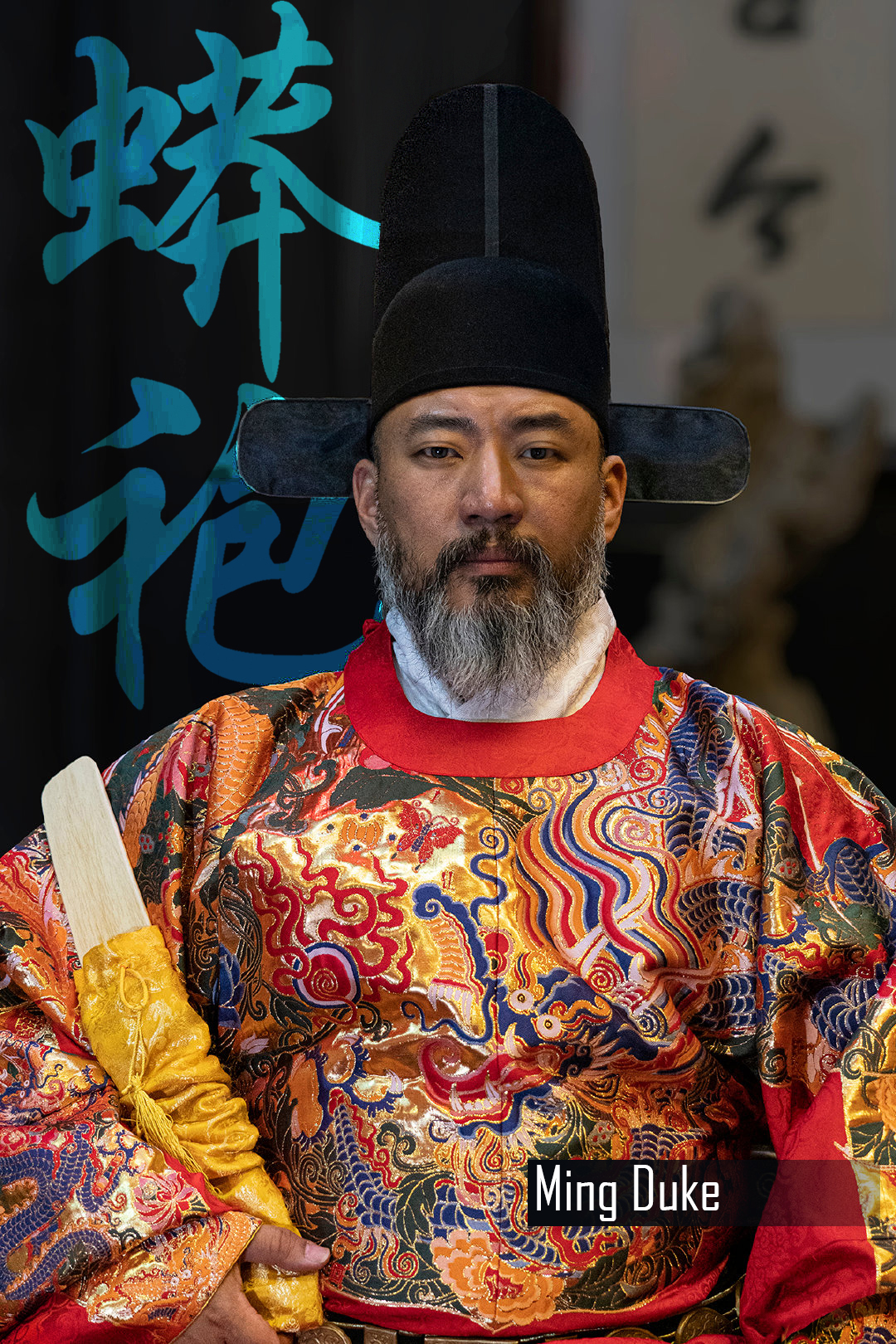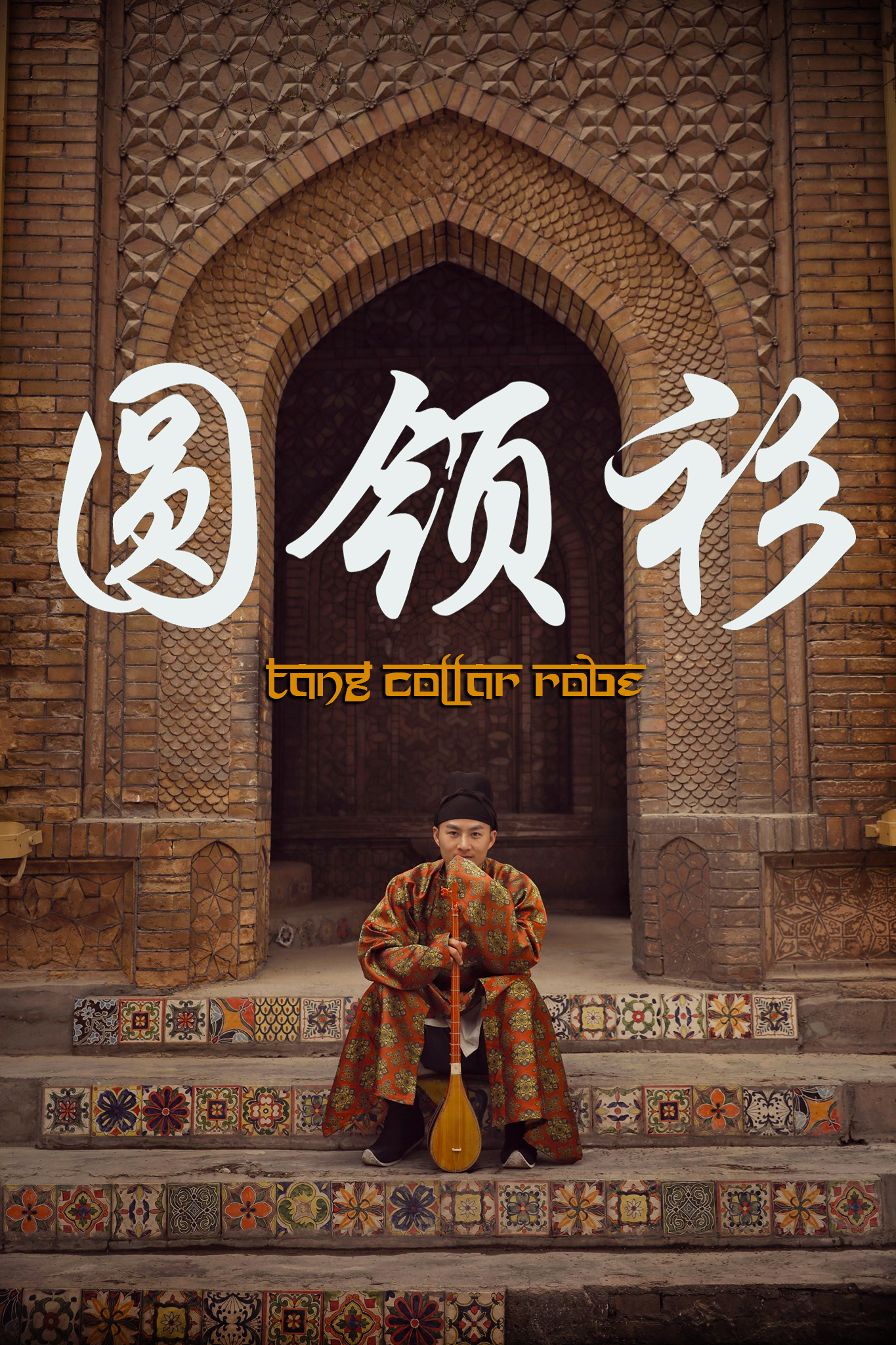Tang Officer's Armor: 唐细札甲
Music: Unyielding Valor
Reenactor: 琥珀叔叔
Armorer: Cold Light Armor (寒光甲胄工作室)
A Tang officer with an elaborate silk cloak with Central Asian motifs. He sports a scarlet headband called Mo e 抹额, which is a scarf tied in front of the forehead, originated in usage since the Qin Dynasty. By the Tang and Song dynasties, headbands were frequently worn by military guards. Beneath his finery, he wore a simple 2 piece lamellar cuirass called diandang jia 两裆甲 (lit. "Two- Piece Armor" or "Two Pronged Armor"- consisting of a frontal and back piece- such armors were extremely simple to make and had been mentioned since the Eastern Han dynasty.
He is depicted carrying a long straight edged saber, as well as a ring- pommeled sword. He carries a bow wrapped in tiger skin quiver. On their side (below) is a tubular arrow case called húlù 胡禄 where his arrows are stored.
This simple yet practical armor originated in the late Han Dynasty, became popular during the Wei, Jin, and Northern and Southern Dynasties, and remained in use until the Ming Dynasty. Diandang jia 两裆甲 (lit. "Two- Piece Armor" or "Two Pronged Armor" - are extremely simple and easily mass produced armors which are essentially 2 pieces of lamellar held together with straps and buckles and secured at the waist with a leather belt. Despite the simplicity of such rudimentary designs- they are quite popular because they are very lightweight and flexible. They are also easy to put on and easy to take off.
Another advantage is the ability to easily provide cheap and reliable armor for large body of troops. Additionally- such armors are extremely modular, though they only represent a cuirass component by themselves, they can easily be expanded so that- depending on the scope of the field missions, the wearer CAN additionally be produced with pauldrons, faulds, armguards, helmets and greaves so that the warrior is fully encased in lamellar armor (with the modular cuirass already at play.)
Reenactor: 王师傅
Headbands had been depicted on soldiers as early as the Qin dynasty from the example of the Terracotta Soldiers. The *New Book of Tang* states that Lou Shide 娄师德- the Chancellor of Empress Wu, recruited brave warriors who also "wore red headbands to respond to the imperial edict." In the Northern Song dynasty, in the archery hall of Bianjing (Kaifeng), the archers all wore purple embroidered headbands and turbans, exuding an imposing presence. The red headband not only shielded from wind and dust but also symbolized loyalty and courage.
Armor beneath the riding coat: Zhao Mausoleum 昭陵- Taizong's tomb complex in Shaanxi China, Taizong commissioned six of his favorite war steeds there and one of the reliefs depicted one of Taizong's favorite war horses being attended by an armored warrior
➢ ☯ Futsunomitama
➢ ☯ MK Celahir
➢ ☯ Muramasa
➢ ☯ Thomas Vieira
➢ ☯ BurenErdene Altankhuyag
➢ ☯ Stephen D Rynerson
➢ ☯ Peter Hellman
➢ ☯ SunB
































.jpg)









Comments